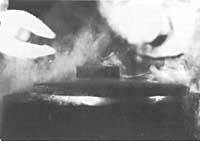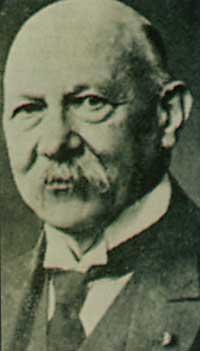Fundamentals of the Electrical Revolution
2000/09/26 Roa Zubia, Guillermo - Elhuyar Zientzia
We live in times of fossil fuel crisis, so the trend towards renewable energies is gaining ground. The application of these energies is, in most cases, the production of electricity. Due to the limitations of current electrical systems (energy waste, above all), scientists are studying alternatives. The objective is to find or develop material without electrical resistance.
These systems would have very attractive physical properties. Among other things (at least theoretically), current generation avoids providing more energy to the system to keep it running continuously. In addition, these materials would have another interesting property. Even if it seems a lie, they would have a levitation capacity. It is no wonder, therefore, that scientists call any compound "superconductors" with this type of behavior.
Reales Reales Reales
However, superconductors are not a simple occurrence of physicists. They are real materials. In fact, any metal generates superconductivity if placed in suitable conditions. These conditions are the biggest problem. For the metal to become superconductor it is necessary to cool it up to an approximate temperature of 270 °C (liquid helium temperature).
They are several complex oxides supereoideas containing copper at higher temperature. Although it is still necessary to cool at -200ºC, these "high temperature superconductors" have awakened the attention of scientists. In fact, since the threshold of the -196 °C has been exceeded, a topic of great relevance has been addressed in the field of research, since they say that cheap liquid nitrogen can be used to reduce oxides until that temperature. However, physicists face another serious problem.
The passage of large currents through these materials means the total loss of superconductive properties. This means that superconductors support very small intensities and, therefore, most applications are prevented. Members of a group of German physicists have recently published in the specialized journal Nature a solution to this problem.
It is recalled that superconductivity appears in complex oxides. These materials are formed by networks of three-dimensional atoms. Among the oxides with better properties are the compounds of itrium, barium, copper and oxygen, known as YBCO. In these oxides the electric current is not a direct consequence of the movement of electrons, but of the holes that leave the lack of electrons. Therefore, the electric transporters have a positive charge.
Looking at atoms
The material is formed by small specimens of these orderly networks and the problem arises in the unitary limits. The electric current has great obstacles to overcome these limits. According to theoretical calculations, the obstacles have their origin in the loss of oxygen atoms. The group that runs the physicist Hammerl has introduced calcium ions in the empty locations of oxygen atoms. The oxides anions and calcium cations have a similar size, so they are placed correctly in the net. In addition, calcium is capable of carrying the holes of the electronic density from grain to grain. In this way the limit is easily exceeded and superiority is not lost in large electric currents. Several members of the aforementioned group tried to apply this solution last year, but excess calcium and superconductivity broke with YBCO oxide.
On this occasion, physicists have followed a new methodology. The material is organized in layers. The layers doped with calcium and no calcium have been placed between them. Researchers have found that calcium atoms migrate from one layer to another, so that calcium does not appear in such large quantities.
The improvement is remarkable. The electric current that circulates without resistance is six times higher in the new YBCO. These materials are used to make cables and tapes. The superconductors currently used are bismuth, strontium, calcium and copper oxides (BSCCO), which contain stabilizing lead. They are usually very expensive, because they have to be completely surrounded by silver. The one-metre cable carrying a amp has a price of 300 dollars (60,000 pesetas, 2,400 pounds). With Kate production the cost could be reduced to 50 dollars. But expensive. YBCO oxides are much cheaper. The cable mentioned in the chain production could be transported up to a cost of a single dollar.
Just as electricity changed the world, superconductors will revolutionize electrical systems. Little by little we are changing the concepts, but the applications do not look very far. XXI. In the twentieth century, energy has to undergo violent changes.
Dependence on fossil fuels only requires a political interest, since the scientific interest in the performance of electricity is in sight.

Gai honi buruzko eduki gehiago
Elhuyarrek garatutako teknologia




